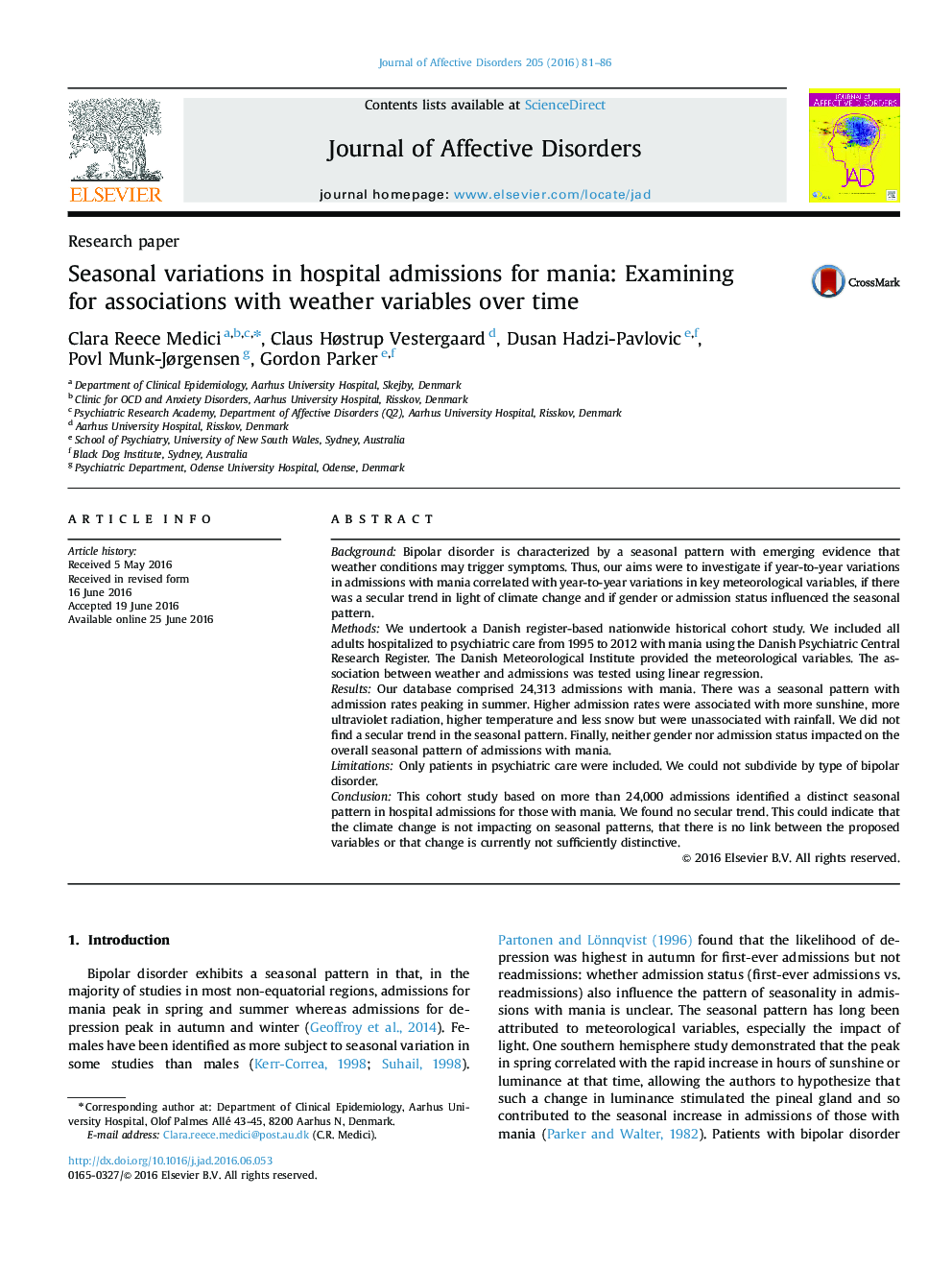| کد مقاله | کد نشریه | سال انتشار | مقاله انگلیسی | نسخه تمام متن |
|---|---|---|---|---|
| 6229652 | 1608120 | 2016 | 6 صفحه PDF | دانلود رایگان |
• This register-based nationwide study correlated weather and admissions with mania.
• Admissions with mania followed a seasonal pattern with peaks in summer.
• Admission rates correlated with sunshine, ultraviolet dose, temperature and snow cover.
• The seasonal pattern in admissions was unaffected by changes in climate variables.
BackgroundBipolar disorder is characterized by a seasonal pattern with emerging evidence that weather conditions may trigger symptoms. Thus, our aims were to investigate if year-to-year variations in admissions with mania correlated with year-to-year variations in key meteorological variables, if there was a secular trend in light of climate change and if gender or admission status influenced the seasonal pattern.MethodsWe undertook a Danish register-based nationwide historical cohort study. We included all adults hospitalized to psychiatric care from 1995 to 2012 with mania using the Danish Psychiatric Central Research Register. The Danish Meteorological Institute provided the meteorological variables. The association between weather and admissions was tested using linear regression.ResultsOur database comprised 24,313 admissions with mania. There was a seasonal pattern with admission rates peaking in summer. Higher admission rates were associated with more sunshine, more ultraviolet radiation, higher temperature and less snow but were unassociated with rainfall. We did not find a secular trend in the seasonal pattern. Finally, neither gender nor admission status impacted on the overall seasonal pattern of admissions with mania.LimitationsOnly patients in psychiatric care were included. We could not subdivide by type of bipolar disorder.ConclusionThis cohort study based on more than 24,000 admissions identified a distinct seasonal pattern in hospital admissions for those with mania. We found no secular trend. This could indicate that the climate change is not impacting on seasonal patterns, that there is no link between the proposed variables or that change is currently not sufficiently distinctive.
Journal: Journal of Affective Disorders - Volume 205, 15 November 2016, Pages 81–86
